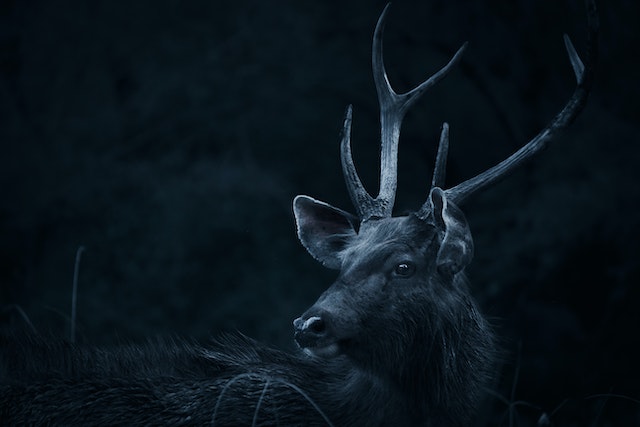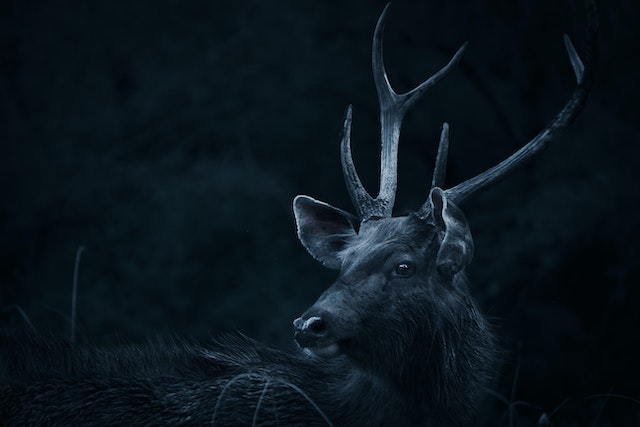
For the hunter, finding a deer in the wild can be an exhilarating journey. Although it might appear intimidating initially, there are several methods that enhance your odds of success. In this article, you will find five tips for tracking down a deer in the woods.
Track Down a Deer in the Woods – 5 Proven Tips
Here are some tips and tricks that can help you track down a deer:
-
Look For Fresh Tracks
To begin your deer tracking expedition, search for new tracks. Identifying a deer’s footprint is easy as it leaves behind a unique trail. Hunt through commonly used paths like game trails and thick bushes, scouring for any indication of where they may have gone. Keep an eye on their direction of travel, as this will give you hints about where they could be heading.
-
Seek Out Heavily Wooded Areas
When it comes to staying safe from predators, the importance of heavily wooded areas and secret bedding grounds for wildlife, such as the white-tailed deer, can’t be understated. These places offer not only camouflage but also provide a quiet spot to feed and rest.
-
Look For Signs Of Deer Activity
When searching for deer, it is important to be on the lookout for fresh tracks and other signs of their activity. Deer often leave scrapes and rubs from antlers on trees as markups of their territory. These can help show you what areas the deer have been in recently. Moreover, watch for droppings as well; these will indicate the size and age of the animal.
-
Follow Food Sources
Areas with plenty of sustenance are the likely habitats of dear. Plants, shrubs, and trees bearing acorns, berries, and other vegetation will attract these animals largely during mornings or evenings when they actively forage for food. Moreover, if there’s a deer feeder in the area, you might find your hunt near it.
-
Consider Using Different Techs
Hunters often turn to technologies like motion-activated cameras and doe decoys to help them find success while out in the woods. The camera can be placed strategically to take photos of woodland creatures as they roam by, such as deer. Similarly, a doe decoy that looks and smells like a real doe can also work wonders for bringing them within range of the hunter’s location.
Common Mistakes To Avoid When Tracking A Deer
In an effort to bag a deer, certain mistakes can impede the hunt. Hunters need to be aware of these blunders and take steps to dodge them. To help with that, here are some common errors to pass over while tracking deer:
-
Not Giving The Deer Enough Time
It can be a major error for hunters to not exercise sufficient patience. After the shot, it is critical to let the deer have an opportunity to rest and pass away. Starting to track it too quickly might only cause the deer to flee farther, making following it much more difficult. Experts recommend waiting at least 30 minutes before beginning the search for your quarry.
-
Tracking A Deer Without Proper Equipment
Taking on a nocturnal deer tracking mission can be risky, so make sure you have the right gear for the job. A good headlamp or flashlight is essential for safety and accuracy. However, even when equipped properly, hunting in darkness requires extra caution and attention to detail since many small signs may be difficult to spot.
-
Failing To Mark The Last Known Location
Prior to commencing the tracking of a deer, you should always remember to note its last known position. This will ensure that you adhere to its trail and avoid becoming disorientated and consequently wandering off course. To aid in this task, one could make use of a colored ribbon or flag; alternatively, a GPS device can be used as well.
-
Relying Solely On Blood Trails
When searching for deer, there are additional clues you should be aware of beyond the presence of a blood trail. Tracks, droppings, and other signs of activity can give valuable information as to where the animal is likely heading, thus boosting your chances of finding it. Therefore, it is essential to pay special attention to such details when hunting deer.
What Equipment Is Necessary For Tracking Deer?
For a successful hunt, it is essential that you have the correct items for tracking deer. Listed below are some of the tools to consider:
-
A Bow Or A Gun
When it comes to hunting deer, having the right weapon is essential. Whatever your preferred choice – be it a bow or a gun – you must be able to use it proficiently and ensure that doing so is legal in your region. Make sure those two criteria are met before heading out on any hunt!
-
Binoculars Or A Spotting Scope
A quality set of binoculars or a spotting scope can be absolutely critical when attempting to spot deer in the wild. To ensure a successful hunt, it is important to look for lightweight, reliable optics that provide a clear view. High-end models will allow you to see further and with greater detail than what your unaided eyes can manage.
-
A Reliable Source Of Light
When you’re out after dark in search of deer, it’s important that you have a dependable light source. Whether you opt for a headlamp or flashlight, make sure the brightness is enough to provide some guidance but not so strong that it frightens away your target.
-
Maps Or GPS Devices
When you go on a hunt in an area that is unfamiliar, it’s essential to have suitable tools for navigation. Whether it be a map or a GPS, make sure to get familiar with the region ahead of time to ensure you won’t get lost and know exactly where you are headed.
Conclusion
For a hunting enthusiast, the thrill of pursuing a deer in the forest can make for an unforgettable experience. Remember the above-mentioned valuable tips and strategies to maximize your potential for success and ensure that you adhere to proper hunting etiquette. Be sure to stay safe at all times and show deference to both the wildlife and its habitat.
Welcome to our blog! My name is Yuvraj Kore, and I am a blogger who has been exploring the world of blogging since 2017. It all started back in 2014 when I attended a digital marketing program at college and learned about the intriguing world of blogging.

